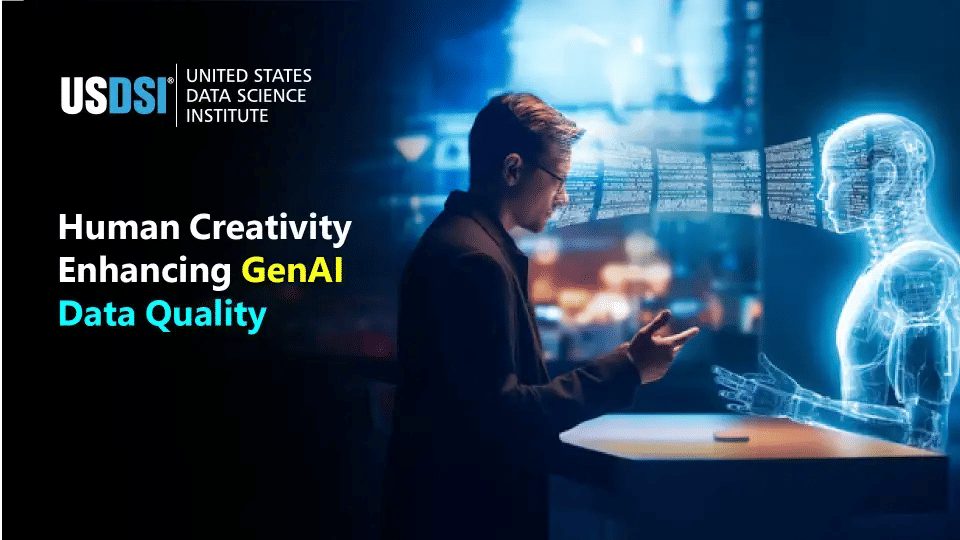
Generative AI is evolving, and discussion around its performance, accuracy, and reliability is also increasing. This brings us to one core truth – quality matters more than quantity. However, in the pursuit of collecting billions of tokens and producing huge quantities of synthetic data, one important component is often overlooked, which is human creativity.
In fact, the most impactful and efficient GenAI systems today are not powered by only huge amounts of datasets, but how unique their imagination is, how rich they culturally are, and how emotionally they resonate with inputs that only humans can provide. Therefore, creativity is one of the most defining factors that determine if the AI system is average or exceptional.
Understanding Quality in GenAI Data
According to S&P Global’s recent research, as of 2025, 27% of organizations report organization-wide adoption of GenAI, and another 33% use it in specific departments/projects.
High-quality GenAI training data doesn’t mean data is thoroughly cleaned, well-labeled, and sufficient in quantity. In the modern AI-driven world, the quality of GenAI is also defined by how creative, original, and interpretive their responses are. AI can undoubtedly generate data quickly, but it cannot replace a human perspective. AI-generated contents replicate patterns, but they do not invent meaning, i.e., it just refines what already exists and does not create the original one.
That is why human creativity becomes important. Creative data is useful to bring variations, surprises, and cultural richness in responses that make GenAI models do something new and deliver outputs that feel original and creative. Without creative input, LLMs might have a risk of hallucination, or they could reinforce bias.
Creativity – Foundation of Meaningful AI Outputs
Human creativity goes beyond just inspiration. It is an essential component that helps AI understand the subtleties of human communication.
Here are a few reasons why creative data is important:
Humans bring mood, tone, humor, metaphor, and emotion into data, which is quite difficult for AI to infer on its own
Creative users interact with their lived experiences and understanding. This helps AI models to be more culturally sensitive.
Since generative AI models learn from patterns, creativity should be injected to prevent it from providing stale outputs and bring innovation in outputs.
Can Human Creativity Outsmart GenAI Data?
Human imagination can significantly enhance GenAI in almost all domains.
Writers, journalists, poets, and content creators can generate datasets based on narratives that are full of plot, emotion, rhythm, and themes. These are qualities that AI cannot produce through synthetic data alone.
Experts worry that “over-reliance on synthetic data” can lead to degraded creativity, bias accumulation, and “model collapse” (i.e., decline in quality).
Designers and artists produce illustrations and original artworks that are diverse and consist of creative flair. This can help models understand aesthetics better.
Scientists, healthcare professionals, and analysts can also contribute their expert insights to make generative AI better, contextually correct, and bring innovative solutions.
These are just examples that show how creativity plays an important role in improving data quality and turning data into intelligence.
Why AI Cannot Replace Creative Human Input?
Even though generative AI models are promoted as highly creative and original, they are far from replicating human creativity. AI recombines patterns, but humans invent them.
No dataset can give AI personal memories and emotions, which are essential for original thought.
AI can simulate understanding, but it cannot truly understand the real-world causality and culture the way humans do.
Most importantly, humans have the ability to imagine what does not yet exist, assume challenges, and even think beyond experiences. This is another important element required for creativity.
Therefore, AI still depends on creative human supervision to provide relevant, responsible, and innovative outputs.
Steps to Integrate Human Creativity into GenAI Pipelines:
Organizations that are concerned about the future are already moving from “data at scale” to “quality data at scale”. Here’s what they are doing:
Creative professionals (like prompt engineers) can refine prompts, guide outputs, and curate datasets. This helps with continuous improvement.
Organizations are turning towards writers, designers, researchers, and subject matter experts for original, creative, and quality content to improve training data quality.
By encouraging professionals from different teams, including marketing, engineering, psychology, design, etc., organizations can introduce new perspectives and minimize data homogeneity.
Organizations are also investing in human reviewers who provide detailed feedback to help GenAI models understand intent in a better way and improve their accuracy.
Organizations are also increasingly leveraging content from various cultural backgrounds to reduce bias and service real-world applications.
Future of GenAI: Creativity as the Distinguishing Factor
As generative AI is widely adopted across industries, creativity will be the new differentiator. Enterprises that focus on enriching their datasets creatively will have a competitive edge as their AI systems will be able to:
So, the future is not about replacing humans with AI but empowering human professionals and supporting creativity. Humans will set direction, and AI will speed up execution.
The Human Spark Behind Intelligent Machines
At the end, we can conclude that the most important element in high-quality GenAI data is not its size, structure, or speed, but the human creativity embedded within it. Creative input/prompts are important as they give GenAI personality, cultural intelligence, and power to produce more relevant and meaningful outputs. With businesses actively integrating generative AI into their operations, human creativity will be required to improve data quality as well as to build the next generation of intelligent AI systems.
This website uses cookies to enhance website functionalities and improve your online experience. By clicking Accept or continue browsing this website, you agree to our use of cookies as outlined in our privacy policy.